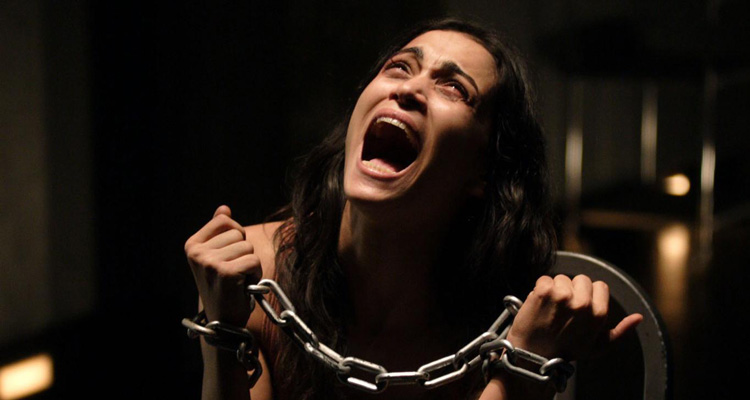
The capacity of cinema to evoke authentic and powerful feelings from its audiences is one of its greatest abilities as a medium. Through its manipulation of images and sounds it can strike its audience into such an engagement with fiction that they feel compelled to react as if it were reality.
Cinema can offer its audience joy and happiness in the defeating of villains or the culmination of a romance. It can bring tears through images of loss, laughter in the display of absurdity and it can even induce terror in the face of danger. However, one of its most powerful abilities is its potential to disturb – the ability to disgust; to create a sickening pit in their viewers stomach amidst gritted teeth and covered eyes.
In this list we’re going to offer some of the most troubling, degenerate and uncomfortable moments in the history of cinema. Due to the subjectivity of ‘disturbance’, a ranked list would be impossible in covering every viewers personal reactions, but hopefully it can be a starting point for discussion. The list should certainly offer scenes that will dampen your appetite and leave you with memories you’d have rather not had.
For the purpose of this list it will be avoiding often banned and cult exploitation films which seemingly offer no artistic or narrative pursuit. Whilst they may reach the height of cinematic extremity, their disturbance often isn’t due to artistic talent or development: they simply imitate snuff films or play out as montages of extremely graphic images of violence.
For the purpose of a list which promotes cinematic art and simultaneously disturbance, it will focus on films with appreciated artistic or narrative value or films which have been exceptionally ‘popular’.
However, for a recommendation of those types of provocative and loathed Z-movies for the fanatics of disturbance: Traces of Death, Faces of Death, Bunny Game, Nekromantik, Grotesque, Aftermath and The Guinea Pig and August Underground collections offer some of the most disturbing images ever captured on camera (just not very artistic ones).
15. Pink Flamingo – Eating Dog Shit
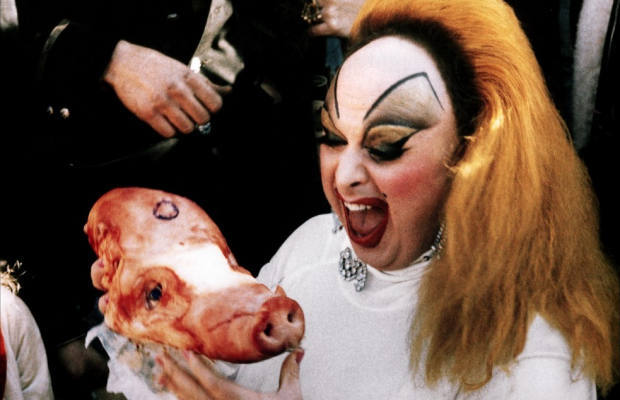
Pink Flamingos certainly doesn’t offer the same gore or carnage that is prevalent in the majority of this list. Instead, it offers the height of degenerate and decadent characters. In envisioning cultural decline it’s difficult to pick between the films of Harmony Korine or John Waters but seeing as John Waters set the precipice for low-budget, documentary-like reflections of grotesque characters, we’ve given it to him.
The premise of the film relies on one character’s bizarre obsession to be named the “filthiest person alive”; it allows for one of the most narcissistic and repulsive characters you could ever encounter. It’s as comical as it is oddly imaginable in an age filled with thirst for fame.
The scene which epitomises the disturbing vision of decadence in the pursuit of fame is when Divine eats real dog shit; the way in which it’s so normalised for the contents of the film is what makes it all the more grotesque.
14. Un Chien Andalou – Eye Cutting
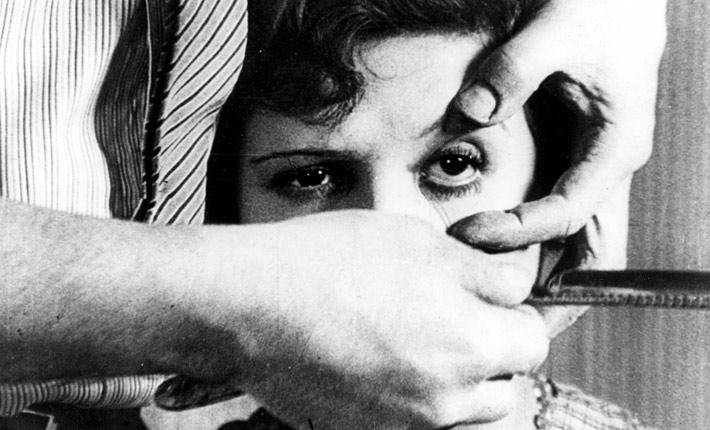
Occasionally in art, two geniuses of their trades come together and offer the world a united masterpiece. When Salvador Dali and Luis Bunuel did just that, it left the groundwork for surrealist filmmaking. Whilst Bunuel is considered one of the greatest surrealist directors and Salvador Dali seems to have certified his position at the top within the art world, it was always going to offer an unparalleled experience.
With surrealism often comes disturbance and with severed hands and rotting donkeys, the pair weren’t going to shy away. In a time of Buster Keaton’s and Charlie Chaplin’s, it doesn’t fit the usual expectations of silent film. The visceral scene that is the films iconic image is the infamous eye-cutting.
As the razor blade is placed against the woman’s eye, the shot cuts to a slit of a cloud passing across the moon and returns to the graphic slicing of the eye. Even if it doesn’t hold the shock it once did, it’s worth watching the mind of Salavdor Dali in motion. It’s a scene that may not match the visceral violence of today but certainly offered shock in its day and still gives its audience a reason to blink.
13. Titicut Follies – Force Feeding
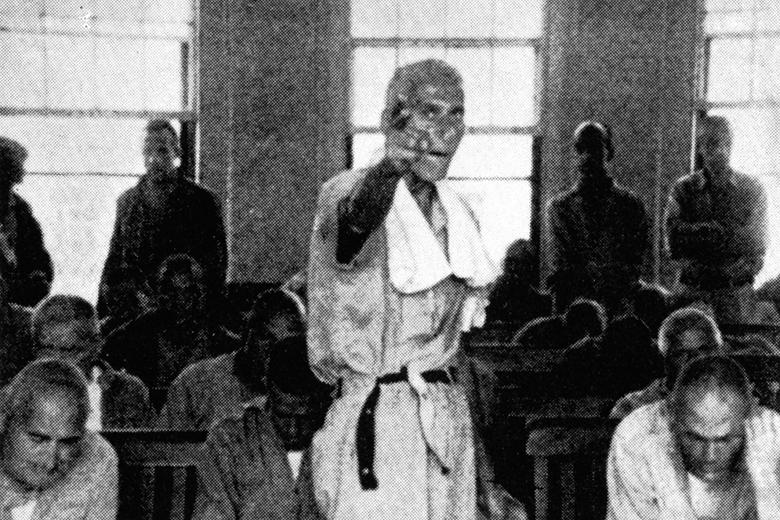
Titicut Follies is different to anything else on the list: for one, it’s a documentary. With his influence from the likes of Vertov, Frederick Wiseman is a pioneer of the cinema verite style.
His fly-on-the-wall approach delivers a sense of realism in which it becomes easy to forget that there is even a filmmaker behind the camera. However, in Titicut Follies, there is one moment where Wiseman breaks the approach and distinctively uses an edit to reflect his own feelings.
The entire film is disturbing to an extent, not in the ways that the other films are but in the way it presents an institution which seems indifferent to the vulnerable patients within it. The institution in question is a psychiatric hospital. With doctors played out like pantomime villains, full of sinister looks and apathetic personas, it’s shocking to think this is a documentary rather than fiction.
In the most disturbing scene, the audience watches a man force-fed through a tube whilst his doctor seems indifferent with a cigarette hanging between his lips. Its power comes through its editing: it’s intercut with the man’s later death – Wiseman disregards his verite approach an opts to send a powerful message of the negligence on display. It isn’t as audacious or absurd as the other acts of disturbance – instead its repulsion is in its reality.
12. Human Centipede – Unveiling the Centipede

It was previously noted that films without artistic value would not be included. Human Centipede’s inclusion makes that statement very debatable, but either way, it’s hugely popular. How this crazed nightmare was firstly made and secondly garnered such a following is a mystery.
The only bigger mystery is how it managed to receive two sequels. For what it lacks in artistic excellence, it makes up for in sheer disturbing content and for that reason, it will almost always find its way onto any list of disturbing films.
Ironically, The Human Centipede is not as graphic as some might expect. It’s largely notorious for the content and the weird centipedes, but in regard to actual visceral violence, it oddly lacks. In many ways, the sequel is far, far more disturbed, offering extreme violence and graphics within the confounds of the similarly demented plot.
However, no amount of exhibited violence in the film could outweigh the fact that it is clearly the idea which is the reason for its disturbance. So, the disturbing scene picked is the exposing of the premise: the arrival of the centipede.
11. Texas Chainsaw Massacre – Grandpa and The Hammer
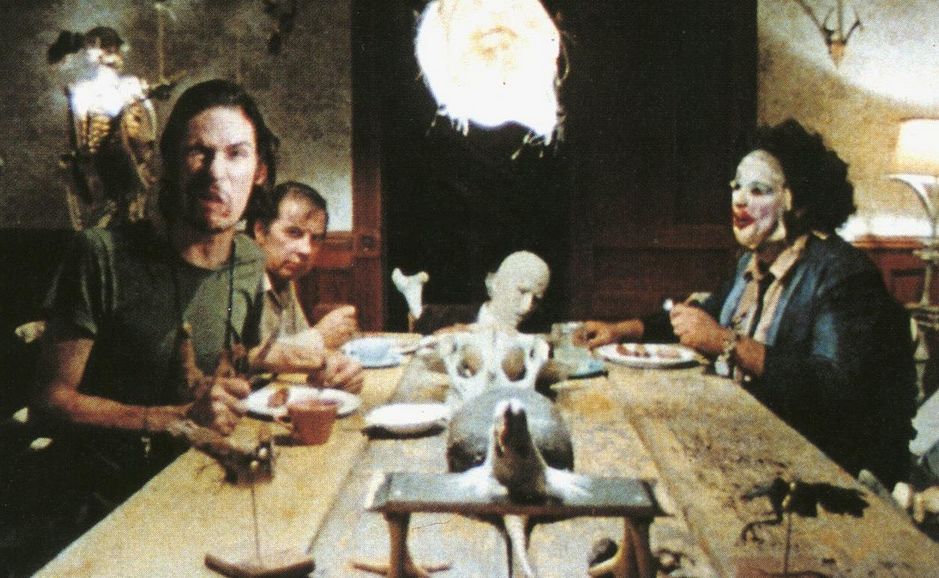
Texas Chainsaw Massacre is often considered one of the greatest achievements in the Horror genre. Most of this can be attributed to the creation of its creepy and unforgettable characters; whilst Leatherface may be the recognisable villain of the series, the character who will never escape the minds of the viewers is that of the old decrepit Grandfather.
The film is like an archive of disturbing moments. Whilst the slow, squelching sounds of Grandpa sucking on Sally’s finger is up there with the strangest and most uncomfortable moments, nothing quite matches his weakened inability to kill Sally. They claim “he’s the best” when it comes to slaughter, yet when he looks like a wilting corpse and can barely hold an object between his fingers, his skull crushing abilities aren’t what they used to be. It’s a magnificently unbearable and tense torture scene and presents one of the most disturbed families ever created.
10. The Isle – Fish Hooks
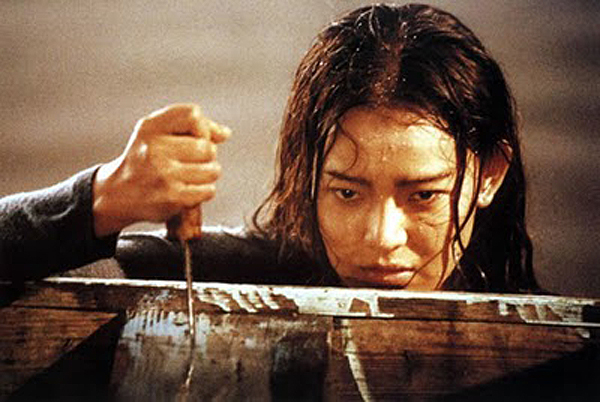
When mentioning disturbance and South Korea, the first assumption is Oldboy. The tongue cutting scene is one of the most notorious images of contemporary South Korean cinema and whilst it’s great, it’s not as weird as The Isle. In fact, Kim Ki-duk deserves a special mention for his unappreciated disturbing graphics.
He may produce the most uncomfortable and graphic scenes in the whole of South Korean cinema; films like Pieta and Moebius show the level of his deranged ideas. The scenes in those films and his others may be more graphic and to some more disturbing than that of The Isle, but the Fish Hooks scene in The Isle is so bizarre and so unique that it has to take precedence.
The film became notorious for its causing of audience members to vomit and faint at its premiere in Venice. Yet, it’s really just a love story, just a slightly abnormal one. The scene presents the depressed lover stuffing fish hooks inside her vagina and falling into the water in an unorthodox suicide attempt: only for her lover to have to fish her out – hooks still attached. As the hooks are removed, they form the bloodied shape of a love heart. Who said romance is dead?
9. Antichrist – Genital Mutilation
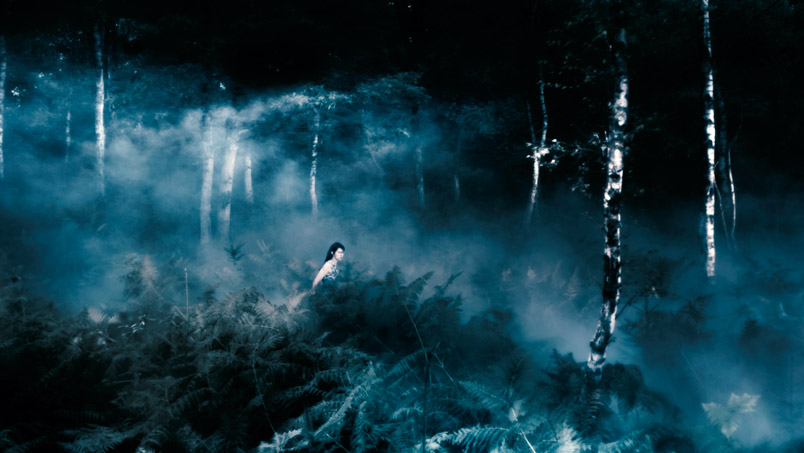
Lars Von Trier is no stranger to violence or sadomasochism; in 2006 Trier wrote Antichrist during a spell in a psychiatric hospital after a depressive breakdown: it’s not surprising that the film reflects a dark mind, at its very darkest. The film is both bleak in its cinematography and its subject, leaving a hollowness for its viewers as they descend into a steep insanity of mourning, depression and visual intensity.
Whilst many directors could deal with the subject matter by portraying realist depictions of suffering, Lars Von Trier isn’t most directors. He reflects the psychological pain suffered by the characters by allegorically presenting their self-hatred and suffering through physical manifestations of self-mutilation.
The close-up of the wife cutting off her clitoris is the climax of the endless violence and it is excruciatingly real. The dedication to Tarkovsky leaves it as no surprise the film is shot so beautifully, an achievement which makes the violence all the more uncomfortable to watch.